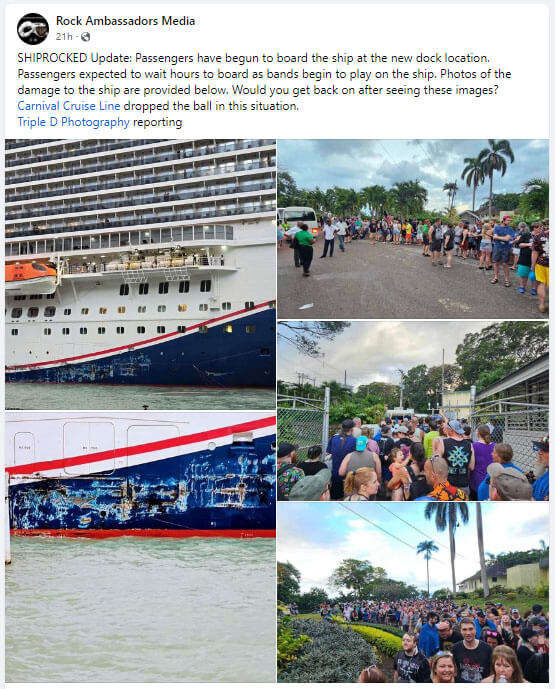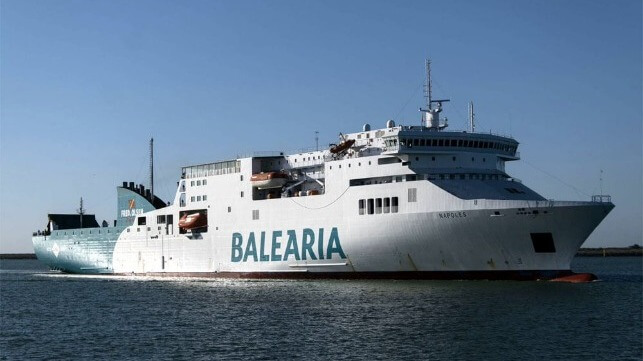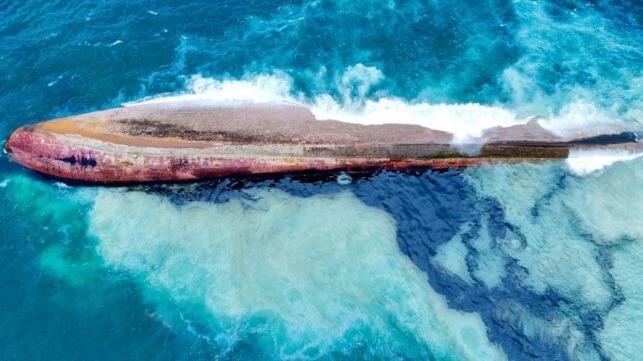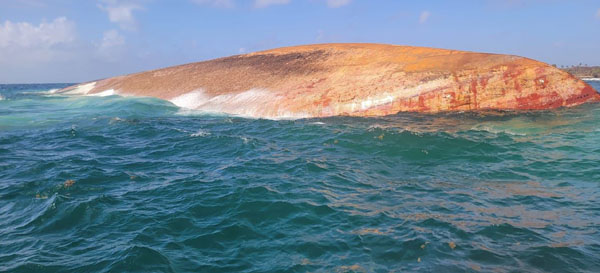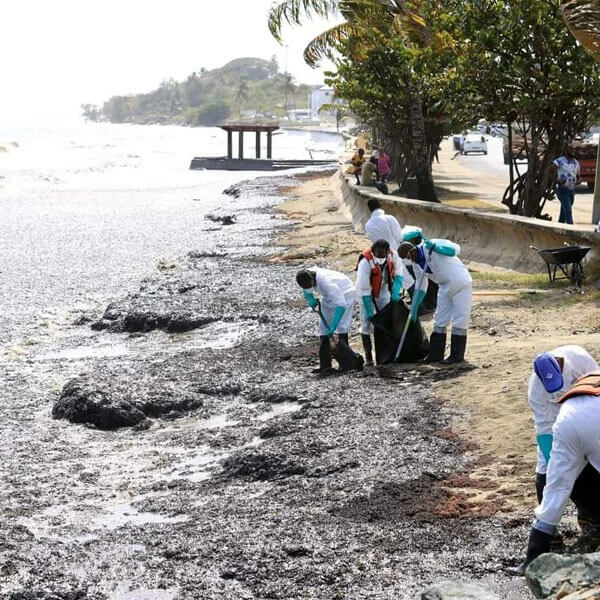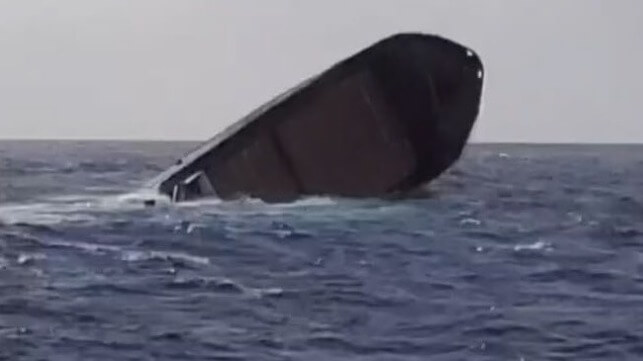Forgotten Passing Arrangements Led to Towboat Collision
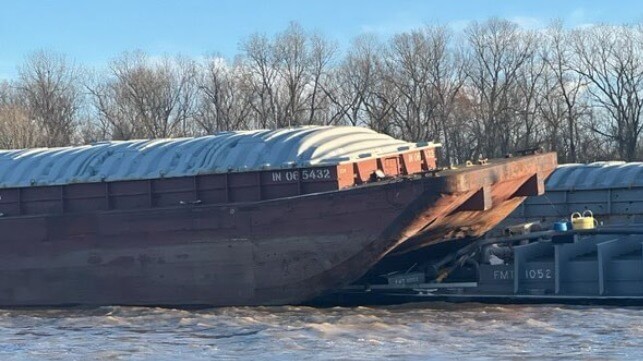
The National Transportation Safety Board has determined that a major barge tow collision was caused by a pilot forgetting the passing arrangements that he had agreed on with another towboat, putting the two on the same side of the river.
In the early hours of January 9, 2023, the towboat Big D was downbound on the Mississippi and encountered the upbound towboat Carol McManus. Both were pushing full barge tows ahead; Carol McManus had 42 barges and an overall tow length of 1,560 feet, longer than a ULCC.
The two towboats were on track to meet at a bend in the river. At about 0134, Big D's pilot called the Carol McManus on VHF and proposed a "one whistle" passing arrangement (port-to-port). Big D would "hold tight" to the inside of the bend, on the right descending bank of the river. The Carol McManus' pilot agreed, saying "yeah, that'd be fine."
As they proceeded towards the bend, both towboats took a course along the right descending bank. The Big D's pilot noticed that something was wrong as his tow approached the bend: AIS showed that the Carol McManus was coming towards him, and so did the McManus' lights.
At 0151, when the two tows were just 1,000 feet apart and closing, Big D's pilot called Carol McManus to alert the towboat that it was "still cutting in on me." The McManus' pilot appeared to misremember their passing arrangement and responded “You said two whistle, right?”
Both pilots took measures to reduce the effects of a collision, backing down and maneuvering to minimize damage. The tows collided head-on at 0152, and multiple barges made contact. Both tows broke up, scattering barges along the river. Other nearby towboats responded and helped to round up the runaways.
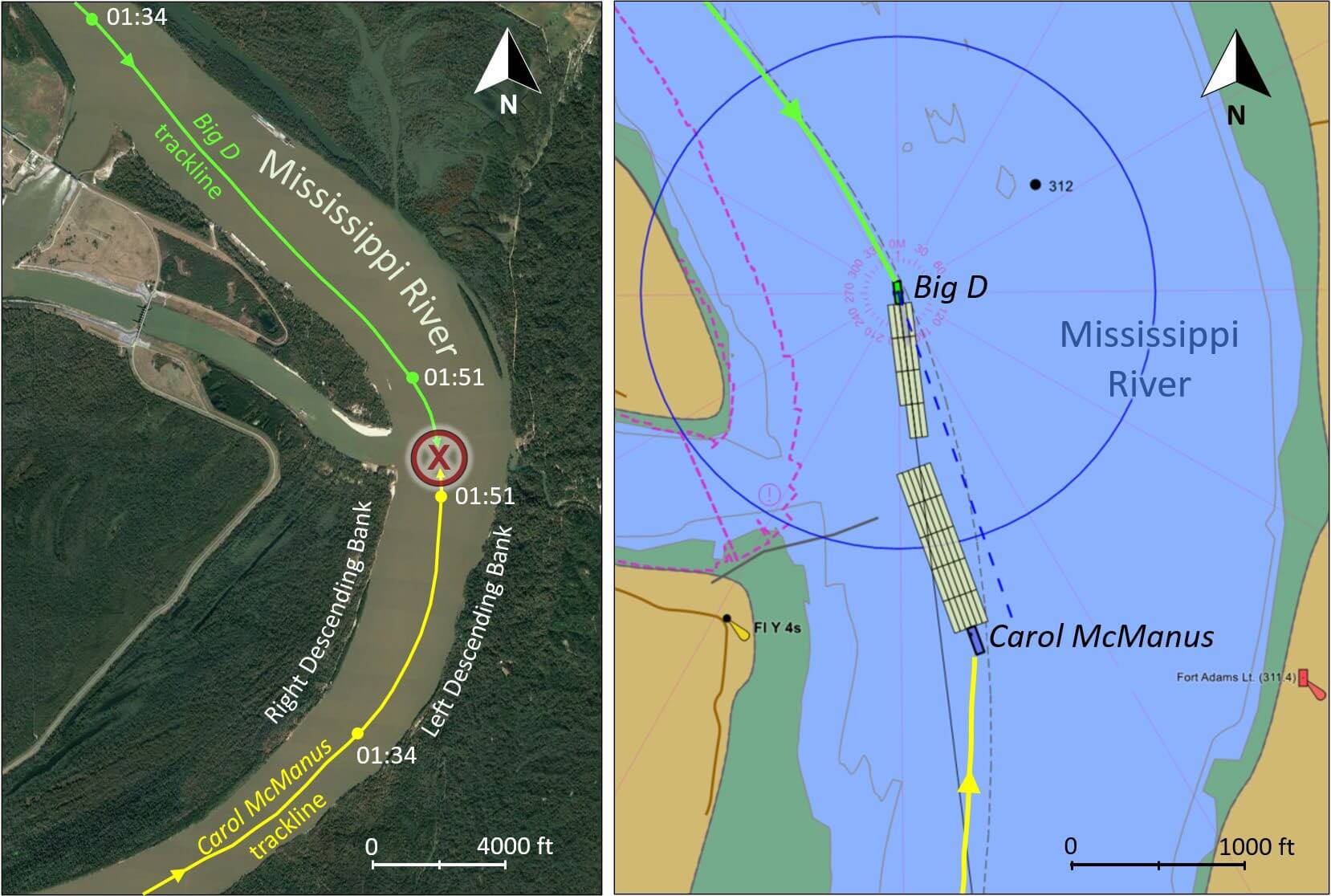 Courtesy NTSB
Courtesy NTSB
14 barges were damaged by the collision, with an estimated total repair cost of about $1.4 million. The impact also breached piping systems on a tank barge full of ethanol, releasing about 1,400 gallons of the chemical into the river.
There were no signs that Carol McManus' pilot was in any way unqualified for the task. He was an experienced towboat master with 50 years of experience on the water, including 30 as master or pilot. He was working a six-and-six schedule, standing watch from 1100-1700 and 2300-0500 every day, and he said that he got five hours of sleep between each watch. He passed all drug and alcohol testing.
In a post-casualty interview, he told investigators that he "got confused" about the passing arrangements and "forgot" about the agreement with Big D.
NTSB noted that six-and-six watch rotations can cause fatigue, but the McManus' pilot did not show signs of impairment. Instead, investigators honed in on the details of the passing arrangement conversation, as well as the length of time (20 minutes) between when the two pilots reached an agreement and when the vessels actually met. Repeating the details of the agreement back over the radio - instead of a nonspecific acknowledgement like "that'd be fine" - would have improved the odds of remembering it, NTSB advised. The agency said that it is "critical" to do so - even if COLREGS does not require it.
"Had the Carol McManus pilot repeated back the proposed arrangement, he would have been more likely to correctly recall the agreement and maneuver his tow to the left descending bank," NTSB concluded.
Carnival Magic Dented and Scraped Hitting Jamaica Pier in Strong Winds
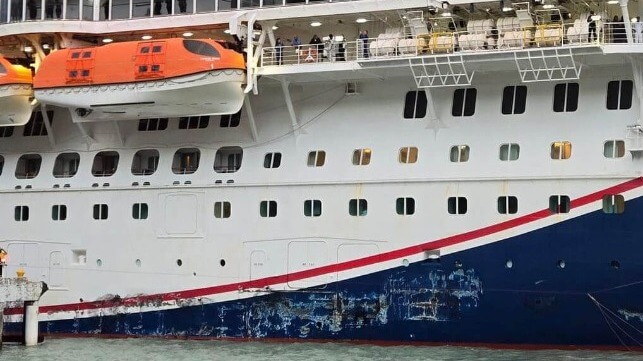
One of Carnival Cruise Line’s large cruise ships, the 130,000 gross ton Carnival Magic, is a little worse for wear after heavy weather yesterday pushed the ship into the dock. The cruise ship remained overnight in Jamaica as an expert team was traveling to meet the ship and inspect the damage.
Pictures show the ship with dents and scrapes along a section of the starboard side where it was pushed against the dock by high winds and a strong surf. The ship’s captain Francesco La Farina confirmed that they had made contact saying “strong winds and swells caused the pier fender to collapse under pressure.”
The cruise ship, which is 1,004 feet in length, had arrived in Ocho Rios, Jamaica early on Tuesday, February 6, with passengers beginning to disembark for a day of tours and sightseeing on the island. The ship is reportedly sold out with more than 3,600 passengers aboard for a special charter rock music cruise.
Around 11:00 a.m. local time the weather increased and videos showed the ship rocking back and forth along the pier. Later pictures show scrapes and dents to the hull above the waterline where the cruise ship made contact with the dock. Another picture shows a crack in the concrete on the pier, although it is unclear if it was caused by the cruise ship.
“For safety reasons, the ship had to sail out to sea,” the captain wrote to the passengers. The decision was to move the ship to an alternate pier, but it was occupied by the Costa Pacifica cruise ship, so the Carnival Magic remained offshore. Carnival passengers coming back to the dock were surprised to find their ship out to sea.
Carnival reports its shore team was making arrangements for passengers stuck onshore, but people were complaining on social media there were hundreds of people with little space and shelter from the rainstorms. Finally, in the evening, Carnival bused the passengers to a new pier to rejoin the cruise ship.
The weather has been playing havoc on the cruise ships as a strong weather front moved across the Western Caribbean. The Carnival Magic had skipped a prior stop in Bimini the Miami Herald reports. Yesterday, three other cruise ships, the Carnival Dream, Norwegian Breakaway, and Regal Princess, were unable to dock in Cozumel, Mexico because of similar high surf and wind conditions.
Carnival Cruise Line reported the Carnival Magic would remain in Jamaica till 5:00 p.m. Wednesday, skipping a planned port call in Grand Cayman. The captain blamed the cancelation of Grand Cayman also on the weather, although the Carnival Magic was still undergoing inspections before it was cleared to depart to return to PortMiami. The ship had sailed from Florida on February 4 on the six-night cruise. The ship departed Jamaica as planned Wednesday afternoon with its AIS showing it is heading to Bimini before its return to Florida.
